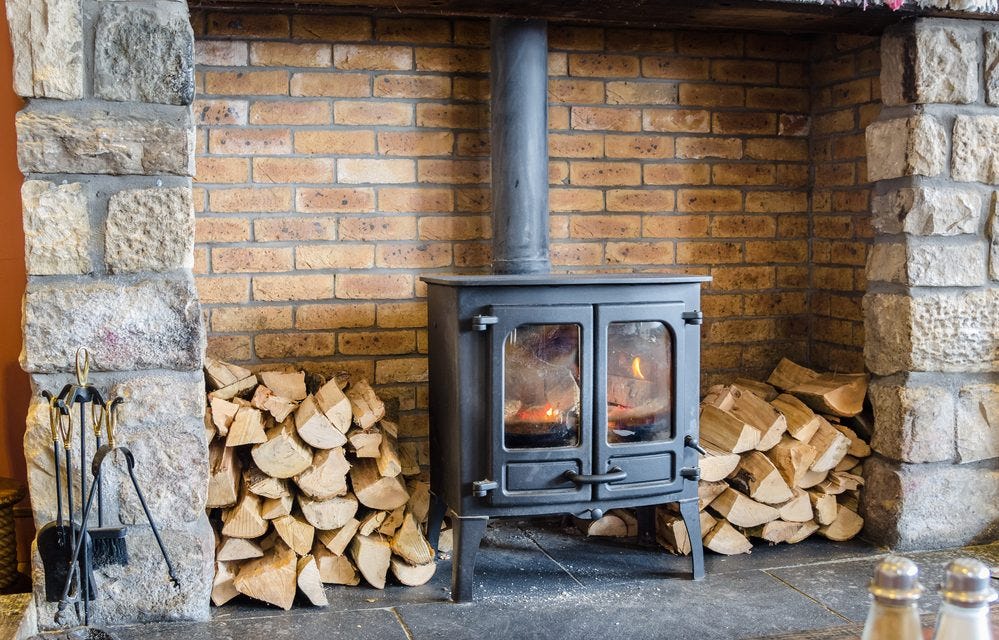The catalytic honeycomb degrades over time and must be changed, but their durability is largely in the hands of the oven user. The catalyst may last more than six conditions if the range can be used properly, however if the stove is over-fired, crap is burnt and typical washing and maintenance aren’t done, the catalyst may breakdown in as little as two years.
EPA licensed timber ranges have a particulate emissions limit of 7.5 grams each hour for low catalytic timber ovens and 4.1 grams per hour for catalytic wood stoves. All wood heat appliances subject to the New Resource Efficiency Normal for Residential Wood Heaters under the Clean Air Behave provided for sale in the United States are required to meet up these emission limits.
Size of the step where in actuality the lumber burns. Often recommended in cubic legs and firewood volume of the chamber in weight. Major fireboxes could be nice. They’re better to load, and can often support these extra-long pieces of lumber that somehow discover their way into the woodpile. When choosing your woodstove, however, remember that ovens with large fireboxes tend to produce larger heat productivity, and simple encouraging is a expensive value to pay for being baked out from the house.
Largest log period that’ll match firebox. The standard firewood length for wood stoves and fireplace stove inserts is 16″, mostly since it’s the most sensible size for handling. Knowing maximum wood length is advantageous since for convenient loading, the firebox must be around three inches greater than your average bit of firewood. Way of measuring simply how much of heat value within the lumber is extracted and sent into the living space. Here is the exact carbon copy of the MPG standing of your car or truck or truck. Remember the quality of the lumber will impact true results.
The heating effectiveness score is decided by the eco stoves manufacturer by testing complete loads of seasoned cordwood. When screening for heating performance, two requirements are analyzed: removal effectiveness; the firewood fill is weighed moving in, and the particulate emissions and ashes are considered following the fire to ascertain how effectively a given firebox design stops working the fuel to remove the accessible temperature and heat move efficiency; this testing is performed in calorimeter rooms built with temperature sensors. Related heat receptors are installed in the exhaust flue. Their education changes in the area and flue are monitored for the period of the test shoots to find out simply how much of the warmth produced by the fireplace is sent into the room, as set alongside the temperature missing up the flue.
Rating of particulate matter emissions in grams per hour. Particulate Subject is a elegant expression for air pollution and indicates small bits of subject such as dust and soot which are suspended in the air. Emissions screening is completed in EPA-approved check labs using the EPA’s recommended protocol. When testing for emissions, a nailed-together “charge” of kiln-dried Pine is burned, and the particulate subject in the exhaust is measured through the entire duration of several shoots at various draft get a handle on settings. This way, the average grams/hour particulate emissions standing is derived. Heating efficiency is not tested during EPA emissions testing.
The warmth productivity reviews can be misleading. In deciding a maximum heat production rating, check laboratories used by companies (usually using wood fuel) pack the firebox packed with firewood and turn the draft get a grip on large open. That raging, short-duration fireplace is simply the opposite of how people burn their wood ovens, and may be deceptive: if the only thing you look at is the most temperature production status, a tiny timber range with a very huge air consumption may look just as strong as the biggest wood stoves.
Some companies utilize the temperature production score from EPA screening, which employs softwood fuel. Another way these numbers could be deceptive is that non-catalytic timber ovens tend to produce a higher top temperature production, but that alone doesn’t mean they’ll produce more heat around an eight hour burn off routine, which is a more relevant performance indicator. The end result is that you can not examine the warmth output of ranges because the ratings are not standardized.
